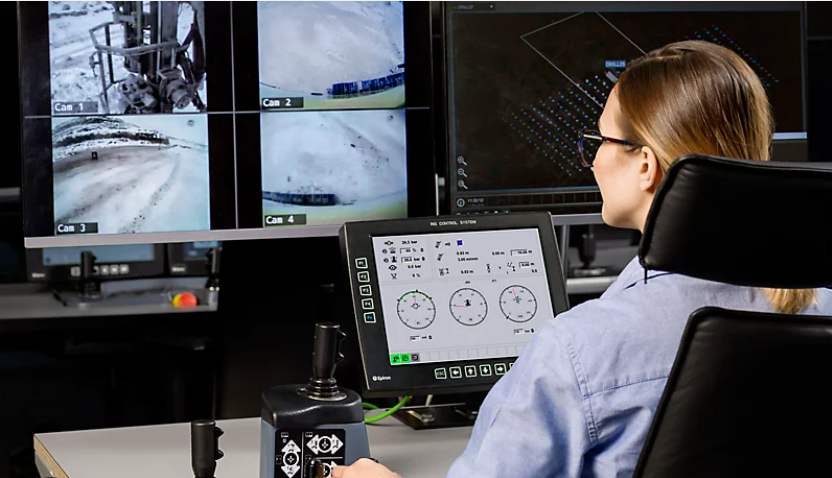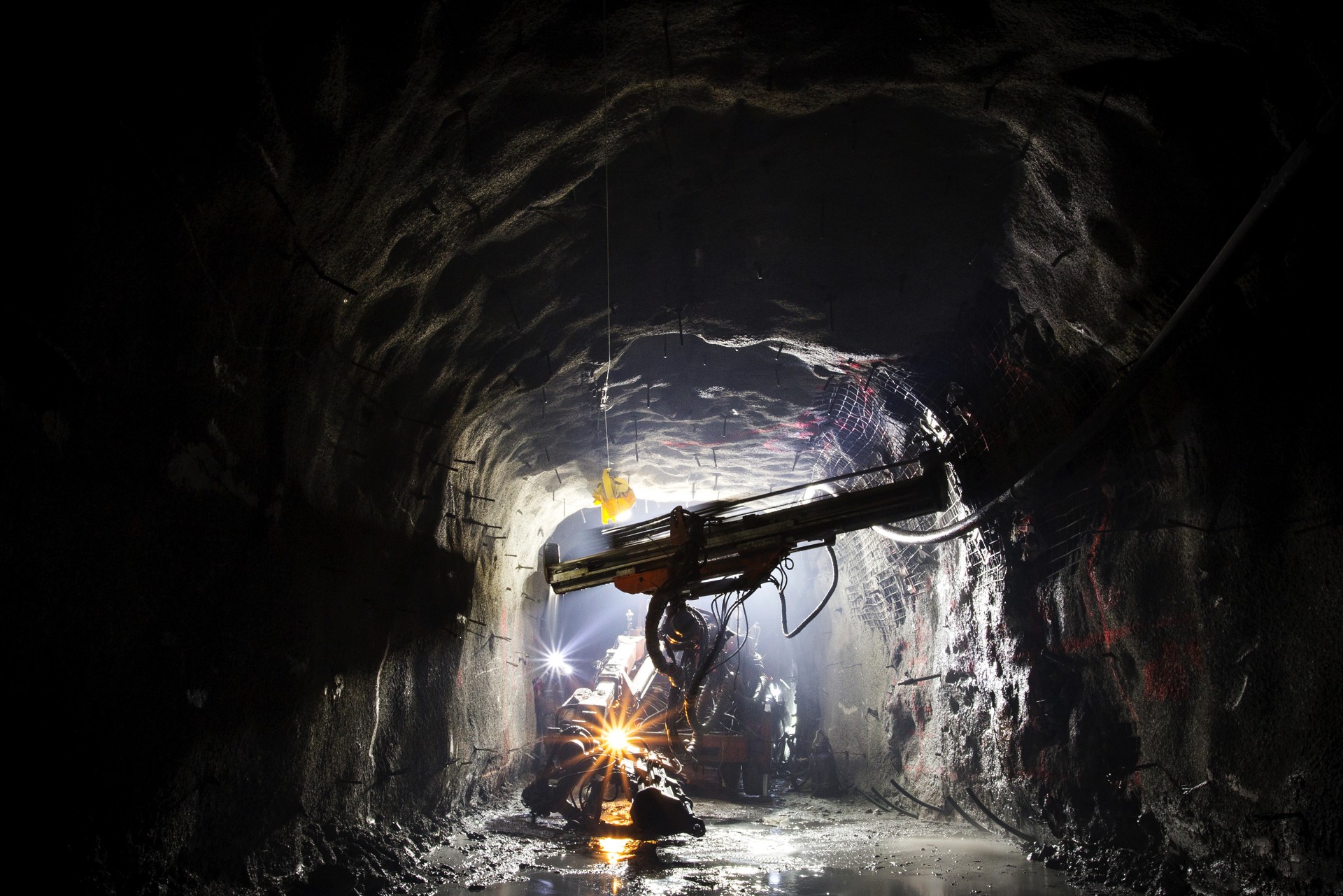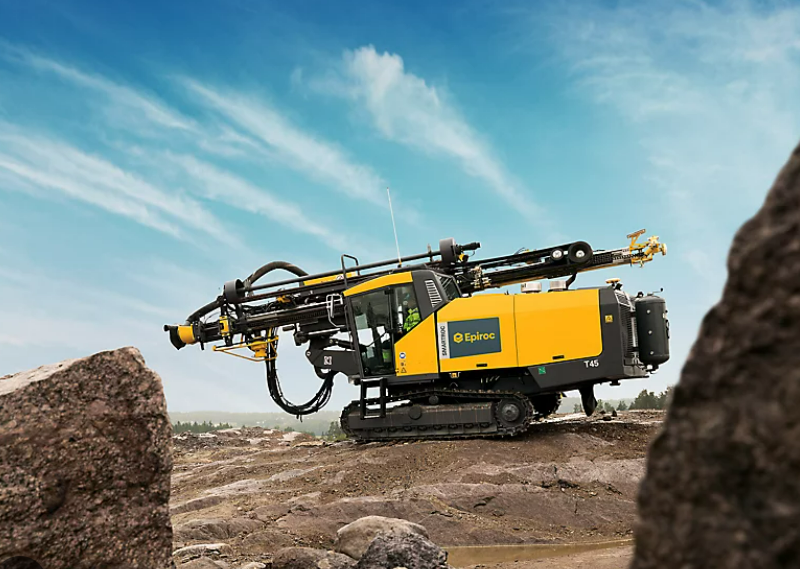Epiroc says it has won a major equipment order for Hummingbird Resources’ new Komana underground mine in southern Mali.
Hummingbird, through its subsidiary Société des Mines de Komana, has selected Epiroc drilling rigs and loaders with advanced automation capabilities to develop Komana’s new underground mine, which is part of Hummingbird’s wider Yanfolia business. As part of the agreement, Epiroc will also provide drilling consumables.
The equipment consists of a Boomer M2 downhole drilling rig, a Simba M6 production drilling rig and a Scooptram ST18 loader. The loaders will be equipped with the Scooptram automation system, which will allow operators to control the vehicle remotely from a safe distance.

Other automation features on the machines include Epiroc’s Certiq telematics system, which intelligently monitors machine performance and performance in real time, and Epiroc’s RCS Rig Control System, which prepares the machines for automation and remote control.
“We look forward to contributing to the success of Hummingbird Resources’ new underground mine, where our machines and best-in-class automation solutions will help achieve optimal productivity and safety,” said Sarah Hoffman, vice president of sales and marketing for Epiroc’s underground division. ” ., and we thank them for their trust in Epiroc as their partner.”
Dan Betts, CEO of Hummingbird Resource, added: “Epiroc’s knowledge and experience in supplying underground mining equipment makes Hummingbird the industry’s partner of choice. When Epiroc equipment arrives on site, we are in Mali. Yanfolil site continues to advance the development of an underground mine to support the company’s future production pipeline on this asset.”
Shougang Peru recently added Robit drilling consumables to its drilling equipment following a series of down-the-hole tool (DTH) comparison tests, the Finnish company said.
Much of the drilling and excavation work in Peru’s Shuganga iron ore is carried out by Cosapi Mineria, a subsidiary of Cosapi SA, one of Peru’s largest construction and engineering companies, a company that Robit had to impress.
In open-pit mines, down-the-hole drilling tools are commonly used extensively for pre-separation and buffer drilling. This makes iron ore mining company Shougang Hierro Perú an attractive target for Robit SAC to supply its products.

José Luis Cisneros, CEO of Robit SAC, said: “The iron ore from the Xugang iron mine in Peru consists of very hard and abrasive materials. Suitable soil can be found with a compressive strength of 250 to 300 MPa. We contacted Cosapi Mineria and in 2020 “The first tests were conducted earlier this year using a 7″ (178 mm) drill bit and D65 hammer. Since then, we have been working more closely with Cosapi to provide them with innovative materials to improve productivity.”
He added: “In recent months, we have been working with Cosapi to test the major DTH providers in the market. Thanks to constant monitoring from our assistant engineer Kevin Salas and our DTH sales manager Martin Rodriguez, we have been able to find new ways to improve operations and set higher drilling standards.”
The open pit job required extensive pre-splitting at two stations using DHD45 hammers and 5-inch drill bits, ballistic buttons and convex surfaces. The average duration of these exercises is 1400 m and the average speed is 32 m/h.
Cosapi recently signed a contract to extend the operation of two open pits at Peru’s Shougang iron ore mine. Robit said the company was so impressed with Robit’s testing that it signed a supply agreement and trusted Robit to cover 60% of its competitor’s drilling tool consumption.
Cisneros said: “This is the first customer contract for a down-the-hole drilling tool in Latin America, and we will provide assistance and inventory for the customer’s operations, including technical services, hammer maintenance and bit management. We hope to contribute to Cosapi Mineria and the market. Demonstrating that “Robit SAC has the necessary resources to continually exceed the expectations of our strategic partners.”
Robit said it has signed a contract with its partner to supply drilling consumables to several mines in Uzbekistan, including the state-owned Navoi Mining and Metallurgical Combine (NMMC).
According to the company, Robit hammers and downhole drilling consumables will be shipped in batches in 2020. This news follows the recent conclusion of a contract with Russia’s Norilsk Nickel for the supply of drilling tools.
NMMC will use these consumables in underground and open-pit mines in the Navoi and Samarkand regions of Uzbekistan.
NMMC’s underground operations include Zarmitan, Gudzhumsay and Karakutan. Its famous open-pit gold mines include Muruntau (one of the largest open-pit gold mines in the world, pictured), Uchkuduk and Amantai. It is an important producer of gold and uranium in Uzbekistan.
Robit said it has signed a contract to supply drilling tools to Norilsk Nickel in Norilsk, Russia, with delivery expected between April and May.
Norilsk is located in the Krasnoyarsk region of Russia, above the Arctic Circle. Since there are no road or rail connections, all cargo is delivered by cargo ships across the Arctic Ocean to the port of Dudinka in Murmansk or by air. Robit said that Robit’s drilling consumables will be shipped by sea.
Norilsk Nickel is one of the leading metallurgical and mining companies in Russia, a producer of palladium and refined nickel, and one of the world’s largest producers of platinum and copper. The company also produces cobalt, rhodium, silver, gold, iridium, ruthenium, selenium, tellurium and sulfur.
Meanwhile, Robit supplies drilling consumables for applications such as mining, construction and contracting, tunneling and drilling. The company offers two lines of products and services: top drive hammer and down-the-hole hammer.

Last month, the company signed a two-year contract to supply drilling tools to Saudi Arabia’s Al Masane Al Kobra Mining Company for use on a giant underground drilling rig at the Al Masane copper-zinc mine. The tools will be provided by Robit distributor Bin Harkhil.
In February, Robit delivered the first batch of underground drill pipes to the Al Amar underground gold-copper-zinc mine in Maaden, Saudi Arabia.
Robit introduces diamond ball-tooth drills for top hammer drilling in an effort to extend the life of these consumables and reduce the maintenance costs associated with them.
The company plans to begin mass production and deliveries before the end of the year, but has already signed a contract with its first mining customer.
Traditionally, drills used for top hammer drilling are made from hard metals, but while they are often effective in terms of penetration in the initial stages, these drills can wear easily depending on the application.
Nico Ohala, R&D engineer and materials expert at Robit, said the Robit Diamond Button series of drills feature an industrial diamond coating that lasts many times longer than conventional drills and does not require polishing.
The method of applying diamond coating to buttons is very similar to the method of making diamonds. That is, it is subjected to high pressure and temperature, which makes it stronger than natural diamonds.
“The coating has multiple layers that provide adhesion and allow the diamond bit to withstand the shock and temperature fluctuations of hammer drilling,” Ojala said. Robit Group has previously used diamond coatings in oil and gas operations on softer substrates with success. Now, for the first time, the durability of diamond is being used in percussion drilling in hard rock.”
Robit sales manager Kimmo Kangas said Robit has been developing these buttons for five years and has conducted extensive field testing with “constantly improving results and great success.”
“Mass production and delivery will begin in the second half of this year; Initially, diamond drill bits will be available in diameters of 89mm and 102mm,” Kangas said, adding that Agnico Eagle’s Kittilä gold mine in Finland will begin using Robit later this year.
Agnico Eagle Kittilä Operations Manager Jari Kolehmainen and CEO Janne Saukko say: “The collaboration with Robit to test these new innovations has been very fruitful. Our goal is to use diamond drill bits to make remote drilling more resource efficient and more productive than using traditional drill bits bits. Drilling is more efficient.”
In test cases, the new diamond drills performed excellently, says Ojala: “When drilling hard granite, you may need to sharpen (i.e. replace) traditional hard metal ball-tooth drills, for example, after 80 m the drill can drill almost a kilometer.
“And because diamond buttons show virtually no wear, their penetration ability does not deteriorate like conventional carbide buttons. As a result, drilling speed remains constant throughout the life of the drill. Likewise, drill diameter does not decrease.” as bits age, resulting in more consistent and predictable production drilling end results.”
“The intervals between bit changes are greatly increased, saving time, which is especially important for remote-controlled drilling rigs in fully automated mining environments, since no one is present during the process,” he concludes.
The mining industry continues to look for ways to improve efficiency and reduce costs, and drilling companies are following suit.
The best drilling contractors know that the key is to provide maximum value to their clients. Drilling equipment is only one part of the equation, with other metrics providing insight into the overall cost.
To quantify drilling efficiency, some measurements need to be taken. Which metrics are most meaningful and provide the best information to find ways to improve productivity and increase ROI for mining companies?
This article by Robert Boart* of Boart Longyear highlights the key metrics of exploratory diamond core drilling: safety performance, schedule, price and quality of core recovery.
Safety comes first. Providing the safest possible working conditions and a safety culture in which every employee knows that they have the right and responsibility to stop any unsafe work is an ethical responsibility. Boart Longyear’s investment in a robust environmental, health and safety (EHS) program has paid off in increased incident rates (fewer reportable incidents) and decreased severity of incidents that occur.
Incidents can be classified as recordable events or lost time events, but severity is a key factor that insurance companies consider. This is their first indication of the behavior and culture the contractor brings to the site. An additional benefit of increased accident rates is lower insurance rates, and these tangible savings from safe drilling are passed on to customers.
For clients, the contractor’s safety performance also impacts the mine’s safety performance. If there is a dump truck accident, it will not affect the drilling contractor, but if the drilling contractor has a recordable accident or lost time accident, it will affect the safety performance of the drilling contractor and the client (the mine) since it is happening on my property.
The safety program ensures that no matter where a Boart Longyear driller or driller’s assistant works, customers receive the same safety results. This stability and safety are important reasons why customers choose Boart Longyear™ drilling services. Boart Longyear’s safety commitments, culture and programs are consistent with its own programs, and customer-specific programs can be easily implemented because Boart Longyear employees are well-versed in adopting and working to the highest safety standards.
When estimating contract costs, it is easy to assume that the drilling contractor’s hourly price represents the total cost. This negates the value proposition of a well-trained, well-resourced and responsive contractor. Additional costs must be considered, such as the cost of support personnel, including security personnel, geologists and drilling project managers, as well as the costs of rig floor construction, water transportation, supervision, drilling fluid, surveying and equipment rental.
Although these costs are beyond the direct control of the drilling contractor, ineffective safety and operational practices can impact these additional costs and easily exceed any savings initially estimated.
The key metric that affects cost is the number of feet or meters drilled per shift. The foot/meter estimate for each shift is used to calculate the schedule based on the number of shifts required to complete the drilling plan. The client uses this calculation to plan for site support personnel, support equipment (dozers/helicopters, etc.), and any other services for the program (camps/fuel, etc.).
When drilling contractors drill wells more efficiently, completing drilling programs in less time, clients save on support costs. If drilling takes longer and the schedule cannot be met, costs will increase as the drilling contractor will be on site longer to complete the required feet/meters. This is a key indicator: the contract based on footage remains the same, but if the drilling contractor takes longer to achieve the required number of feet per meter, the cost will increase. Drilling contractors still make about the same amount, but costs to clients are rising.
In a recent example, Boart Longyear crews took on an unfinished project after the original low-bid contractor struggled to complete a project that was expected to take six weeks. In the eighth week, when only one third of the way was completed, Boart Longyearbyen was called in and completed the remaining drilling on the project in just four weeks.
Boart Longyear Drilling Services currently measures all the different increments that make up a 12-hour shift to find out the efficiency of each step – bit, drill pipe loading, wireline time, shift, transport, mud planning, etc. Measuring every step drilling plan, additional efficiencies can be identified and savings can be shared with clients.
Post time: Apr-02-2024
